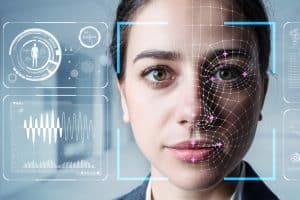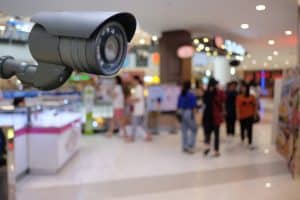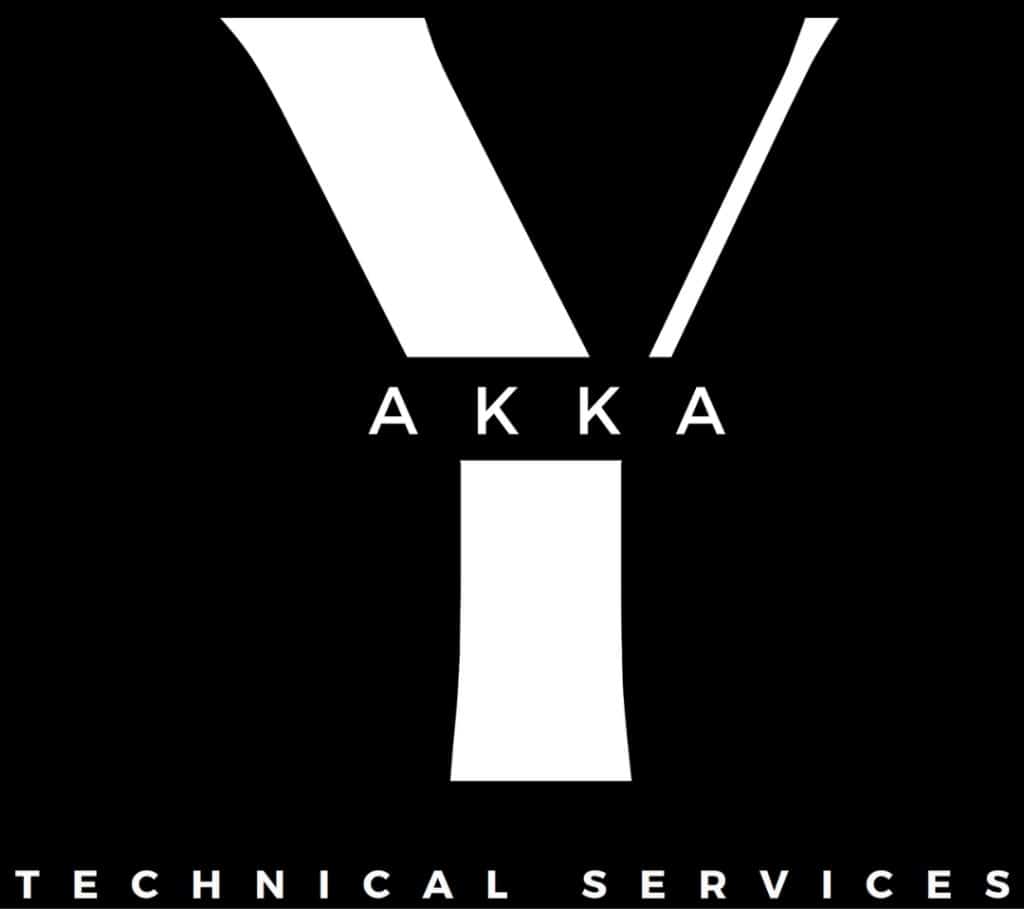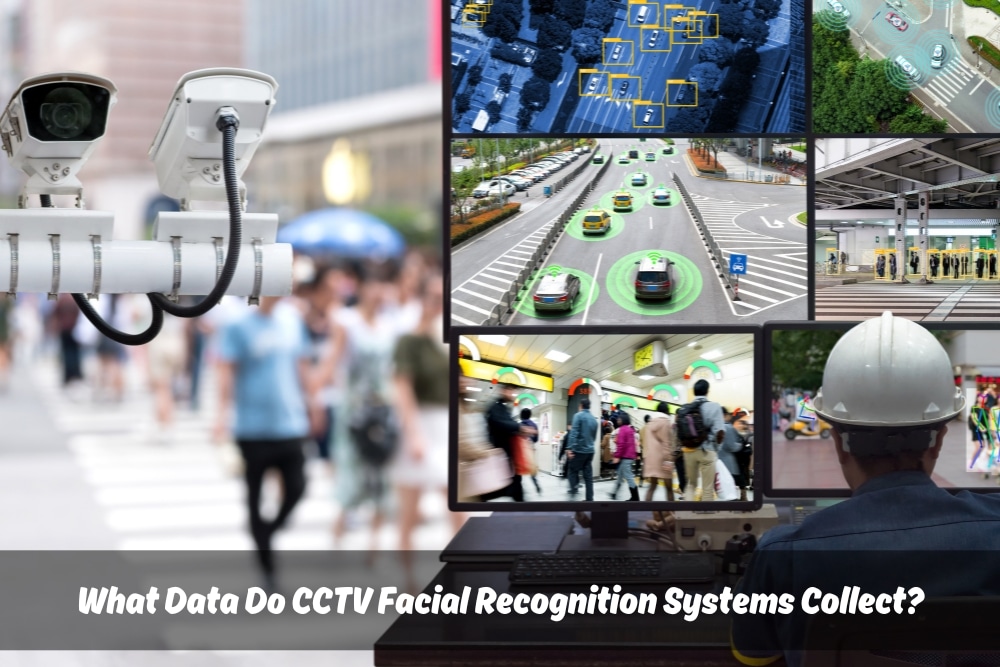Intrigued by those cameras in shopping malls? You might be surprised to learn they can do more than capture blurry footage. Many CCTV systems now boast facial recognition tech, analysing faces captured on camera. But what information exactly do these systems glean from your visage?
What facial features do CCTV recognition systems analyse?
Imagine a CCTV camera catching you on the street. Facial recognition software doesn’t just take a blurry snapshot. Instead, it dissects your face, measuring specific features like:
- Distances: The space between your eyes, nose to mouth, and forehead to chin. These distances create a unique map of your face.
- Shapes: The software analyses the outline of your jawline, eyebrows, and even the contours of your nose.
- Proportions: Think of it like a facial fingerprint. The software compares the relative size of your features to create a profile.

By analysing these elements, CCTV facial recognition systems build a mathematical representation of your face. This data point then gets compared against a database of known faces for identification.
How does CCTV facial recognition extract data from images?
Forget the magic tricks, facial recognition is all about some smart technology working together. Here’s a simpler look at how it works.
- Catching you on camera: The CCTV system acts like a digital snapshot machine, capturing images or video footage. Think of it as the system’s first line of sight.
- Finding faces in the crowd: Specialised software acts like a detective, scanning the captured image and pinpointing any faces within it. Imagine it circling potential suspects in a lineup. Bonus points if it can track multiple faces at once!
- Extracting your unique features: Once a face is identified, the software zooms in, separating it from the background like a bouncer clearing the way. Then, it gets to work like a digital detective, extracting data points based on key features. Think of it like measuring things up – the distance between your eyes, the shape of your jawline, that kind of stuff.
- Matching your faceprint: This extracted data, essentially a digital map of your face, gets compared to a database of known individuals. Think of it like checking your passport against a government record.
- A match or not? If there’s a match in the database, the system might trigger an alert or log the identification. Imagine it raising a red flag or making a note in its digital notebook.
Unmasking the mystery! By understanding these steps, you’ll gain a clearer picture of how facial recognition in CCTV actually works. It’s not some kind of mind-reading superpower, but it is definitely some pretty impressive technology!
Is additional data collected besides facial features?
While facial recognition is the main event for CCTV systems, they might also capture some extra tidbits about you:
- Time-stamped: Think of it like a digital receipt. The system usually records the date and time you were caught on camera.
- Pinpointing your location: Depending on the setup, the camera’s location data might be linked to your facial recognition analysis. Basically, it can pinpoint where you were at that specific moment.
- What you’re wearing (sometimes): In some cases, the system might analyse your clothing description. Think of it like a digital fashion show, but not as common.

It’s important to remember that data collection practices can vary depending on the system and local laws. So, the information they snag might differ depending on where you are.
Where is the data collected by CCTV facial recognition stored?
The data collected by CCTV facial recognition systems can be stored in various ways, including:
- Local servers: The data might be held on servers directly connected to the CCTV system.
- Cloud storage: Some systems upload data to secure cloud storage for easier access and analysis.
- Law enforcement databases: In some cases, data might be shared with law enforcement databases if a match is found or for investigative purposes.
Storage duration also varies. It could be a few days for general footage or much longer for identified individuals, depending on local laws and the system’s purpose. Only authorised personnel can access this data.
Can CCTV facial recognition systems recognise you with a mask on?
Facial recognition with masks throws a wrench in the whole shebang. Technology’s always getting smarter, but masks can seriously mess with a system’s ability to identify someone. Here’s the lowdown:

- Data drought: Masks cover up a big chunk of the face, leaving the system with fewer clues to analyse. Imagine trying to recognise someone by just their eyes and the bridge of their nose – tricky, right? That’s what these systems are grappling with.
- Shifting focus: With less data available, the system might try to focus on what’s not covered, like the eyes or the bridge of the nose. But these features can be less reliable for pinpointing someone specifically.
Now, there’s a twist. Some fancy new systems claim they can recognise faces even with partial cover-ups. It’s an area researchers are still figuring out, and how well it works depends on the specific tech and the type of mask you’re wearing.
Conclusion
So, those CCTV cameras with fancy facial recognition tech? They’re pulling in way more data than you might guess from a casual peek. While it can be a boon for security, understanding what information they collect and how it’s used is absolutely crucial.
Concerned about prying eyes? Yakka Technical Services can help you take back control. We’re your one-stop shop for top-notch security solutions, offering a wide range of CCTV systems to suit your specific needs. From cutting-edge facial recognition technology to tried-and-true setups, our friendly security specialists will work with you to find the perfect fit for your home or business.
Because we understand that security goes hand-in-hand with privacy, Yakka prioritises both. Our systems empower you with peace of mind, without compromise. Get in touch with us today to see how Yakka can craft a security plan that keeps you safe and secure.


